| Rotaria neptunia, aggregation of several individuals on a decomposing leaf (2) |
| |
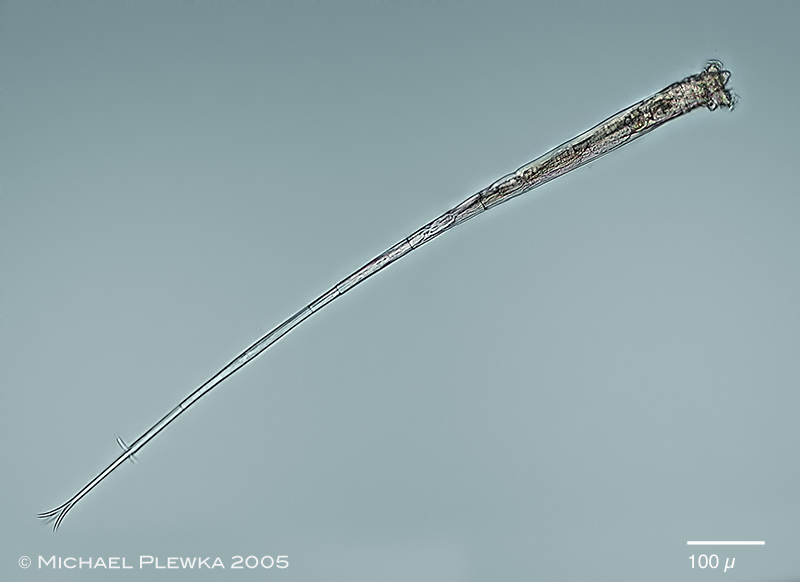 |
| Rotaria neptunia, extended animal whirling. R. neptunia has the longest foot of all bdelloids, which can be retracted. This retractable foot enables R. neptunia to live in relative thick layers of mud compared to other bdelloid rotifers which have a shorter foot. (1) |
| |
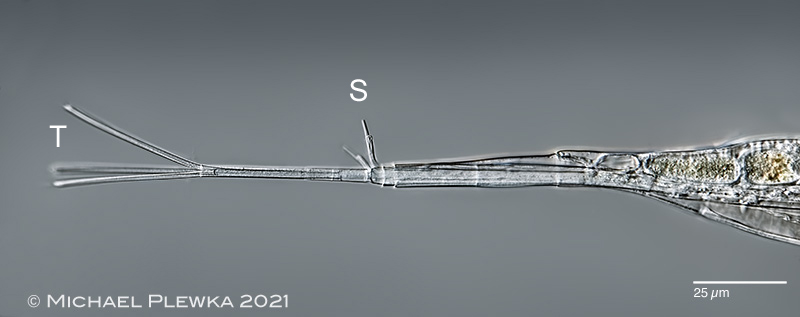 |
| Rotaria neptunia, partially retracted foot with spurs and toes. (5) |
| |
 |
| Rotaria neptunia, this image of a contracted specimen demonstrates that the retracted foot reaches at least up to the mastax. |
| |
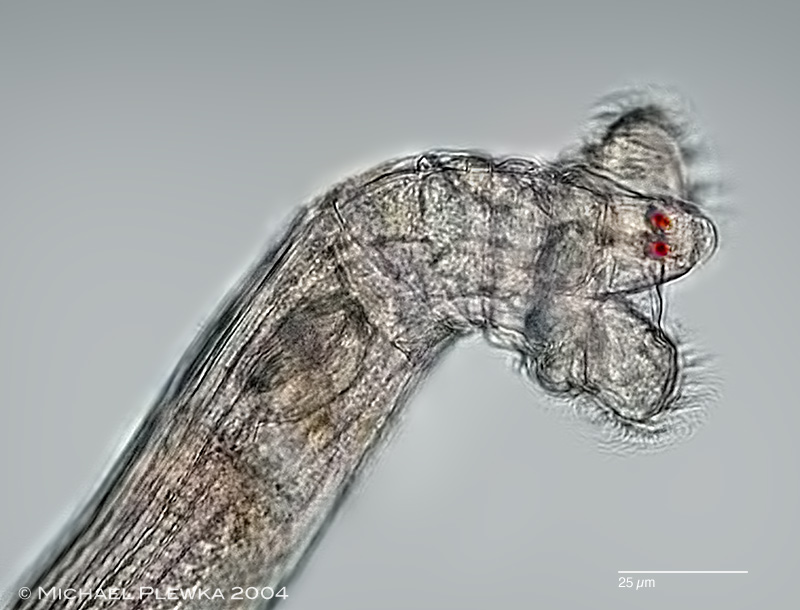 |
| Rotaria neptunia, head of whirling specimen. |
| |
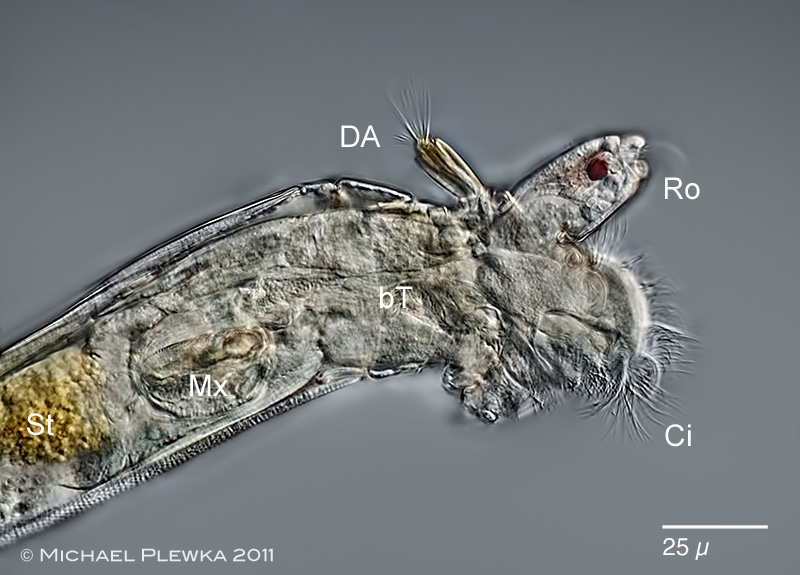 |
| Rotaria neptunia, anterior part of head and mastax region, lateral view; Ci: trochal cilia; DA: dorsal antenna, Ro: rostrum; ; Mx: trophi (mastax); St: stomach. (4) |
| |
 |
| Rotaria neptunia, mastax and stomach lumen of a compressed specimen macerated with SDS (5 |
| |
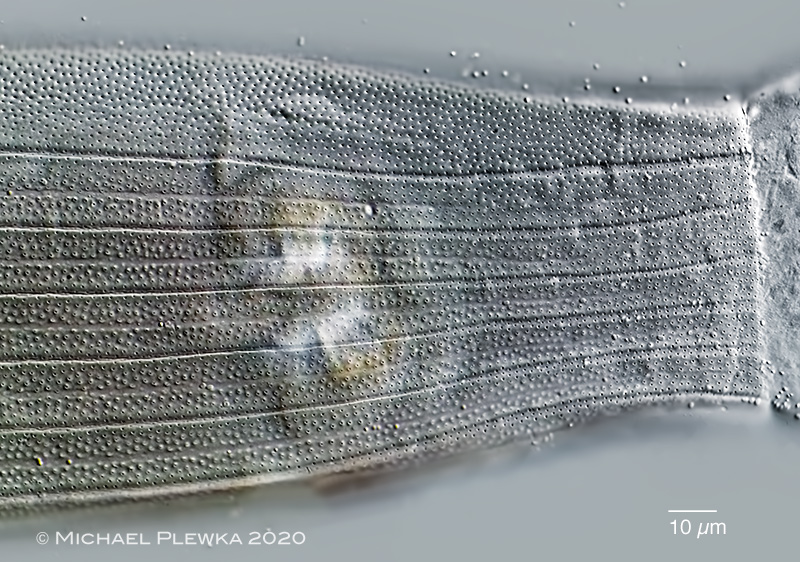 |
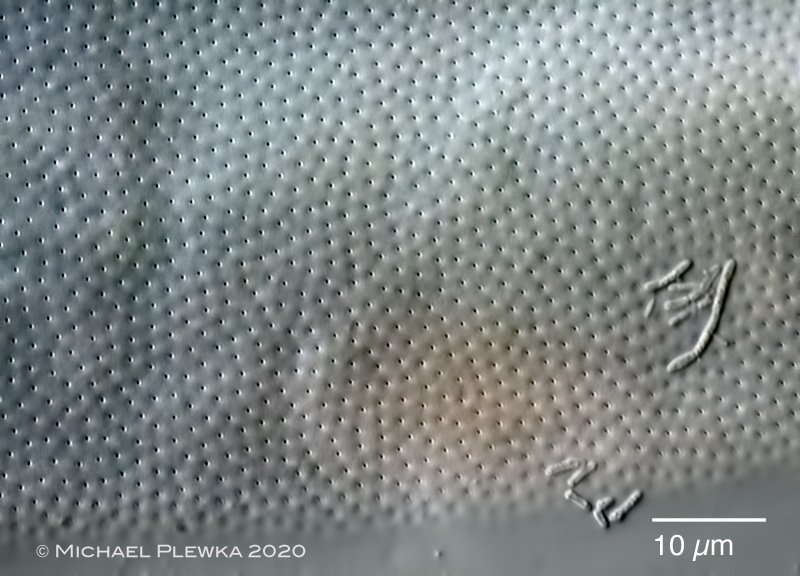 |
| Rotaria neptunia, two images of the integument. Upper image: the integument of the dorsal side is striated and has pores with protuberances. Lower image: ventral integument without striations (the structures on the right side of the image are bacteria). Images not to scale. (5 ) |
| |
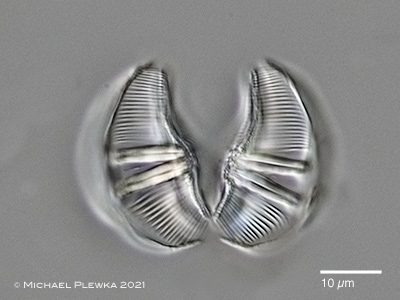 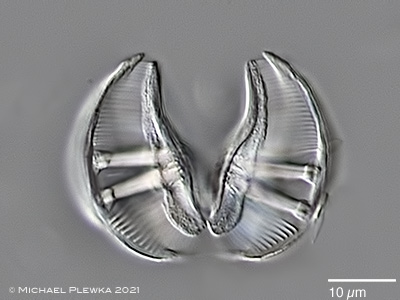 |
| Rotaria neptunia, ramate trophi; left image: cephalic view; dental formula (DF) : 2/2; right image: caudal view; ramus length (RaL): 26µm. Images not to scale 6) |
| |
|
| Location: Gevelsberg, Stefansbachtal, Grünes Klassenzimmer, Teich; Wuppertalsperre (4). NSG Heiliges Meer, location 23 (5) |
| Habitat: decomposing leaves (1; 2); detritus (4; 5; 6); |
| Date: 18.3.2005 (1); 15.4.2005 (2); 27.05.2011 (4); 10.11.2020 (5); 05.12.2021 (5) |
|
|